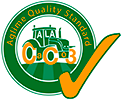Linhay Hill Quarry was granted permission to extend its extraction of limestone in March 2021. One of the planning conditions requires Glendinning to continue to develop the understanding of the limestone mineral deposit and its interaction with ground and surface water by adding observations made by members of the public on land surface changes in the vicinity of the quarry. In this way the knowledge-base of the hydrogeology of the limestone deposit will increase over time.
What does “karst” mean?
“Karst” is a technical geological term and is defined by Wikipedia as: “Karst is a topography formed from the dissolution of soluble rocks such as limestone, dolomite, and gypsum. It is characterized by underground drainage systems with sinkholes and caves.”
As water moves over the land surface it can cause erosion. Water also infiltrates through soils and saturates the ground and moves through and within the various types of rock that together constitute a site’s geology. The interaction between rock and water depends on the geology and its chemistry as well as on the quantity of water. The rock extracted at Linhay Hill Quarry is limestone which, as noted by Wikipedia, is soluble in water and limestone geology is often characterised by the natural karst processes of cave and sinkhole formation.
What observations are helpful to log?
The observations of interest are karst features such as:
If you observe any of the above, you may log it via this website. The tools below will assist you in providing a description of the karst feature and its location together with an ability to upload photographs. The information from the observation you submit will supplement the growing body of scientific data on the limestone and its hydrology - so thank you very much for your contribution.
Alternatively, you can contact Glendinning via General Enquiries on our contact page.
Further technical information and maps can be viewed here.







